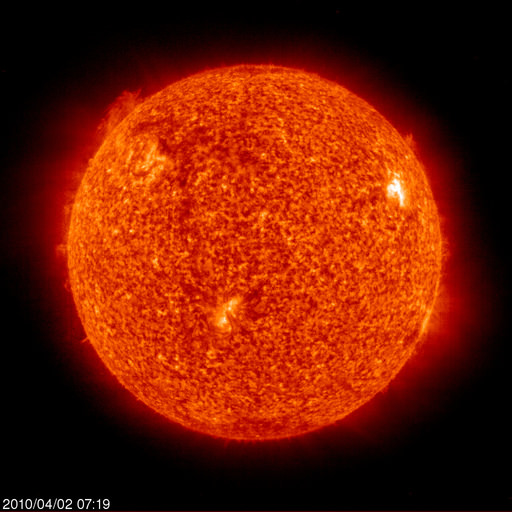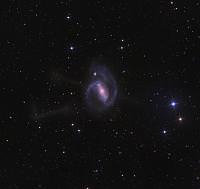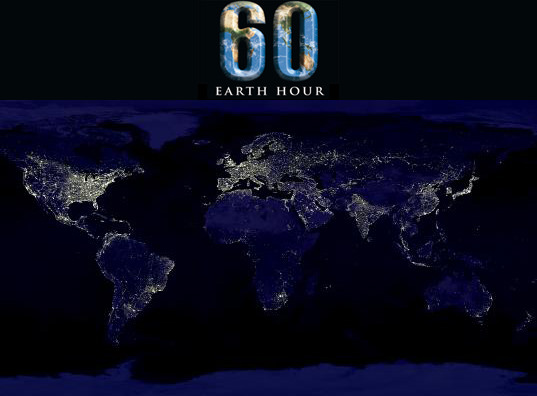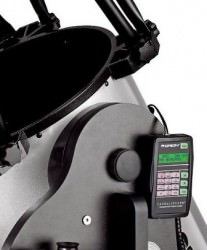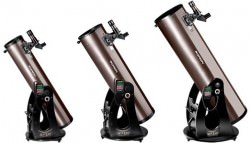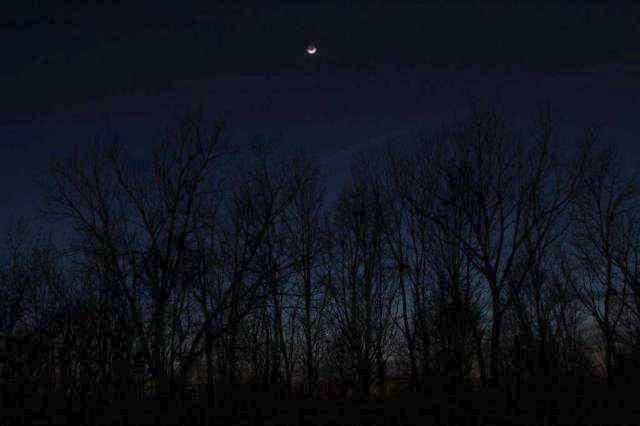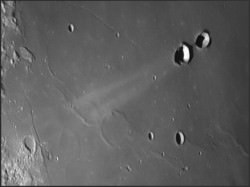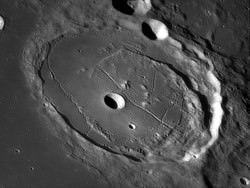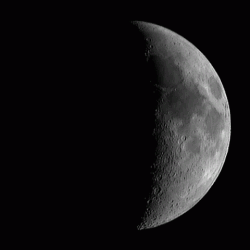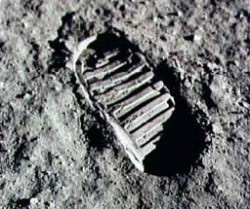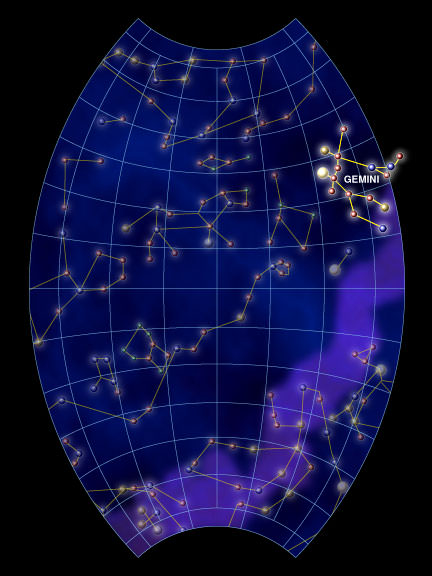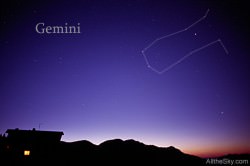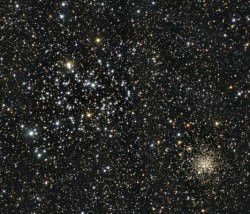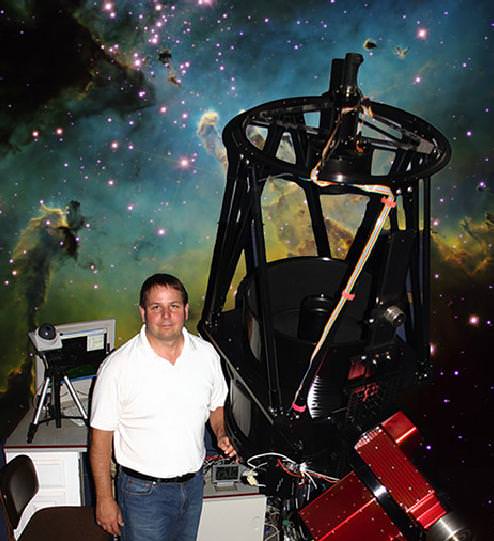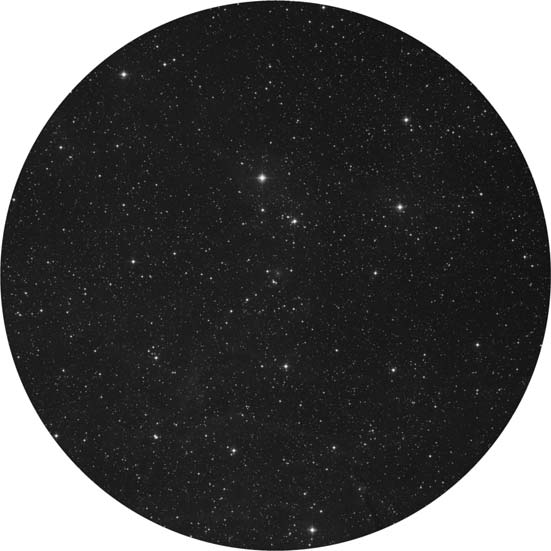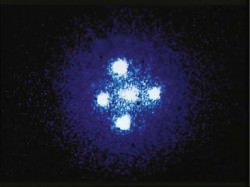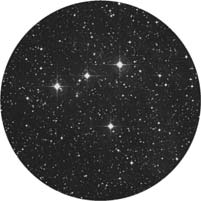Greetings, fellow SkyWatchers! Are you ready to commit a little lunacy? Then don’t forget to turn off your lights to celebrate Earth Hour and let’s take a much closer look at what’s really lighting up the skies – the Moon. Before you think that lunar observing is boring, or carries a little less weight than deep sky studies, then try your hand at truly identifying some of this weekend’s studies! Some features can be identified with just your eyes.. and if you can do the larger ones with binoculars? You’re good. But why not test out your optics and your skills with some real lunar challenges? Then hit the switch and I’ll see you after dark…
 March 26, 2010 – Today, think about a French amateur astronomer who was watching around black spot transit the Sun today in 1859. His name was Lescarbault, and he was sure he’d witnessed a new planet, which he christened ‘‘Vulcan.’’ Nathaniel Bowditch was also born this date in 1773. He also devised the ‘‘Bowditch Curve,’’ which applies in both physics and astronomy. Bowditch’s mathematical and astronomical work during his lifetime earned him many accolades – including election to the American Academy of Arts and Sciences. While his life took him down many career paths, including celestial navigation, one of his fortes was an article on his observations of the Moon which was published in 1804. Now, 206 years later, let’s step outside and look up…
March 26, 2010 – Today, think about a French amateur astronomer who was watching around black spot transit the Sun today in 1859. His name was Lescarbault, and he was sure he’d witnessed a new planet, which he christened ‘‘Vulcan.’’ Nathaniel Bowditch was also born this date in 1773. He also devised the ‘‘Bowditch Curve,’’ which applies in both physics and astronomy. Bowditch’s mathematical and astronomical work during his lifetime earned him many accolades – including election to the American Academy of Arts and Sciences. While his life took him down many career paths, including celestial navigation, one of his fortes was an article on his observations of the Moon which was published in 1804. Now, 206 years later, let’s step outside and look up…
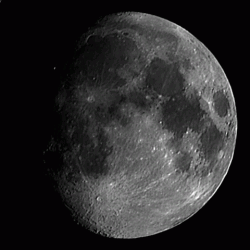 We start our observing evening with the beautiful Moon as we return first to the ancient and graceful landmark crater Gassendi standing at the north edge of Mare Humorum. The mare itself is around the size of the state of Arkansas and is one of the oldest of the circular maria on the visible surface. As you view the bright ring of Gassendi, look for evidence of the massive impact which may have formed Humorum. It is believed the original crater may have been in excess of 462 kilometers in diameter, indenting the lunar surface almost twice over. Over time, similar smaller strikes formed the many craters around its edges and lava flow gradually gave the area the ridge- and rille-covered floor we see tonight. Its name is the “Sea of Moisture,” but look for its frozen waves in the long dry landscape.
We start our observing evening with the beautiful Moon as we return first to the ancient and graceful landmark crater Gassendi standing at the north edge of Mare Humorum. The mare itself is around the size of the state of Arkansas and is one of the oldest of the circular maria on the visible surface. As you view the bright ring of Gassendi, look for evidence of the massive impact which may have formed Humorum. It is believed the original crater may have been in excess of 462 kilometers in diameter, indenting the lunar surface almost twice over. Over time, similar smaller strikes formed the many craters around its edges and lava flow gradually gave the area the ridge- and rille-covered floor we see tonight. Its name is the “Sea of Moisture,” but look for its frozen waves in the long dry landscape.
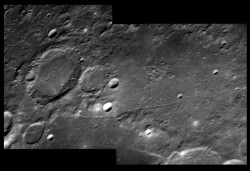 Caught on the northwestern rim of Mare Humorum, look for crater Mersenius. It is a typical Nectarian geological formation, spanning approximately 51 miles in diameter in all directions. Power up in a telescope to look for fine features such as steep slopes supporting newer impact crater Mersenius P and tiny interior craterlet chains. Can you spot white formations and crevices along its terraced walls? How about Rimae Mersenius? Further south you’ll spy tiny Liebig helping to support Mersenius D’s older structure, along with its own small set of mountains known as the Rupes Liebig. Continue to follow the edge of Mare Humorum around the wall known as Rimae Doppelmayer until you reach the shallow old crater Doppelmayer. As you can see, the whole floor fractured crater has been filled with lava flow from Mare Humorum’s formation, pointing to an age older than Humorum itself. Look for a shallow mountain peak in its center – there’s a very good chance this peak is actually higher than the crater walls. Did this crater begin to upwell as it filled? Or did it experience some volcanic activity of its own? Take a closer look at the floor if the lighting is right to spy a small lava dome and evidence of dark pyroclastic deposits – it’s a testament to what once was!
Caught on the northwestern rim of Mare Humorum, look for crater Mersenius. It is a typical Nectarian geological formation, spanning approximately 51 miles in diameter in all directions. Power up in a telescope to look for fine features such as steep slopes supporting newer impact crater Mersenius P and tiny interior craterlet chains. Can you spot white formations and crevices along its terraced walls? How about Rimae Mersenius? Further south you’ll spy tiny Liebig helping to support Mersenius D’s older structure, along with its own small set of mountains known as the Rupes Liebig. Continue to follow the edge of Mare Humorum around the wall known as Rimae Doppelmayer until you reach the shallow old crater Doppelmayer. As you can see, the whole floor fractured crater has been filled with lava flow from Mare Humorum’s formation, pointing to an age older than Humorum itself. Look for a shallow mountain peak in its center – there’s a very good chance this peak is actually higher than the crater walls. Did this crater begin to upwell as it filled? Or did it experience some volcanic activity of its own? Take a closer look at the floor if the lighting is right to spy a small lava dome and evidence of dark pyroclastic deposits – it’s a testament to what once was!
 March 27, 2010 – Enjoy your day and think about the importance of the birth of John Pierce in 1910. Pierce undertook the visionary work of communications satellites. Although people scoffed at his ideas, in 1960 he convinced a U.S. agency called NASA to convert a balloon-borne experiment called ‘‘Echo’’ into a radio wave reflector. Thanks to his brilliant work, the next step was the development of Telstar, a satellite that ushered in the modern age of television! Of course, you could always just skip TV tonight and do the Moon instead!
March 27, 2010 – Enjoy your day and think about the importance of the birth of John Pierce in 1910. Pierce undertook the visionary work of communications satellites. Although people scoffed at his ideas, in 1960 he convinced a U.S. agency called NASA to convert a balloon-borne experiment called ‘‘Echo’’ into a radio wave reflector. Thanks to his brilliant work, the next step was the development of Telstar, a satellite that ushered in the modern age of television! Of course, you could always just skip TV tonight and do the Moon instead!
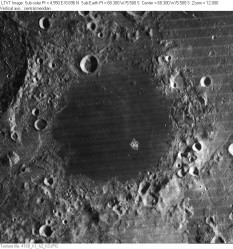 Tonight the great Grimaldi, found in the central region of the Moon near the terminator is the best lunar feature for binoculars. This huge, old basin on the western limb comes from the pre-Nectarian geological period and is definitely at least 4 billion years old. Spanning about 134 miles in diameter and filled with low albedo lava, Grimaldi – like Plato – is a landmark feature that’s easily noticed even without optical aid, but holds wonderful details for study. Using a telescope, take a look at the inner walls of Grimaldi, where you’ll see they have been heavily eroded and worn away by impacts and time. All that’s left now is a series of low hills and ridges – there’s no sharp crater walls to distinguish it. Beyond the basin, an outer wall still remains. If the lighting is right at your time of observation, you’ll notice it appears more strong to the north and west, as opposed to the southeast Rimae Grimaldi. Take a close look at the floor region, too. It’s home to a mascon, too… As well as lunar transient phenomena. Can you spot Lohrmann crater to its north or Riccioli crater to the southeast?
Tonight the great Grimaldi, found in the central region of the Moon near the terminator is the best lunar feature for binoculars. This huge, old basin on the western limb comes from the pre-Nectarian geological period and is definitely at least 4 billion years old. Spanning about 134 miles in diameter and filled with low albedo lava, Grimaldi – like Plato – is a landmark feature that’s easily noticed even without optical aid, but holds wonderful details for study. Using a telescope, take a look at the inner walls of Grimaldi, where you’ll see they have been heavily eroded and worn away by impacts and time. All that’s left now is a series of low hills and ridges – there’s no sharp crater walls to distinguish it. Beyond the basin, an outer wall still remains. If the lighting is right at your time of observation, you’ll notice it appears more strong to the north and west, as opposed to the southeast Rimae Grimaldi. Take a close look at the floor region, too. It’s home to a mascon, too… As well as lunar transient phenomena. Can you spot Lohrmann crater to its north or Riccioli crater to the southeast?
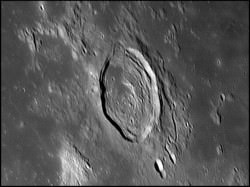 If you would like to see how well you have mastered your telescopic skills, then let’s crater hop. About one Grimaldi length south, you’ll see a narrow black ellipse with a bright rim. This is Rocca. Go the same distance again (and a bit east) to spot a small, shallow crater with a dark floor. This is Cruger, and its lava-filled interior is very similar to another study – Billy. Now look between them. Can you see a couple of tiny dark markings? Believe it or not, this is called Mare Aestatis. It’s not even large enough to be considered a medium-sized crater, but is a mare! Now, hop east and you will see two craters nearly identical in size and depth. The southern crater is Billy – one of the darkest floored areas on the Moon. Inside Billy’s bright rim, you will notice an interior as featureless as a mare. North of Billy is Hansteen, whose interior is much brighter and shows complex details. Comparing the two will show Billy was once filled with smooth lava, while Hansteen avoided that fate and shows its native scarred interior.
If you would like to see how well you have mastered your telescopic skills, then let’s crater hop. About one Grimaldi length south, you’ll see a narrow black ellipse with a bright rim. This is Rocca. Go the same distance again (and a bit east) to spot a small, shallow crater with a dark floor. This is Cruger, and its lava-filled interior is very similar to another study – Billy. Now look between them. Can you see a couple of tiny dark markings? Believe it or not, this is called Mare Aestatis. It’s not even large enough to be considered a medium-sized crater, but is a mare! Now, hop east and you will see two craters nearly identical in size and depth. The southern crater is Billy – one of the darkest floored areas on the Moon. Inside Billy’s bright rim, you will notice an interior as featureless as a mare. North of Billy is Hansteen, whose interior is much brighter and shows complex details. Comparing the two will show Billy was once filled with smooth lava, while Hansteen avoided that fate and shows its native scarred interior.
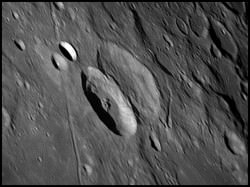 For larger telescopes, let’s try a challenging study worthy of your observing skills. Due west of Hansteen you will find a small crater known as Sirsalis near the terminator. It will appear as a small, dark ellipse with a bright west wall along with its twin, Sirsalis B. The feature you will be looking for is the Sirsalis Rille – the longest lunar “wrinkle” presently known. Stretching northeast of Sirsalis and extending 459 kilometers south to the bright rays of Byrgius, this major “crack” in the lunar surface shows several branchings – like a long dry river bed. Geologically forming in the Imbrian period, chances are the Sirsalis Rille is lunar graben. Thanks to Lunar Orbiter images, the evidence points to shifting tectonic plates as the source of this incredible feature.
For larger telescopes, let’s try a challenging study worthy of your observing skills. Due west of Hansteen you will find a small crater known as Sirsalis near the terminator. It will appear as a small, dark ellipse with a bright west wall along with its twin, Sirsalis B. The feature you will be looking for is the Sirsalis Rille – the longest lunar “wrinkle” presently known. Stretching northeast of Sirsalis and extending 459 kilometers south to the bright rays of Byrgius, this major “crack” in the lunar surface shows several branchings – like a long dry river bed. Geologically forming in the Imbrian period, chances are the Sirsalis Rille is lunar graben. Thanks to Lunar Orbiter images, the evidence points to shifting tectonic plates as the source of this incredible feature.
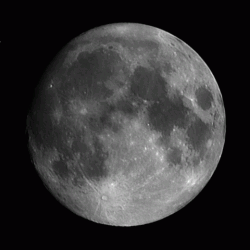 March 28, 2010 – Tonight the Moon will look nearly full and it is a good time to spot yet another lunar asterism, “The Rabbit in the Moon.” Since the dawn of mankind, we have been gazing at the Moon and seeing fanciful shapes in large lunar features. Tonight, as the Moon rises, is your chance to catch a lunar challenge – “The Rabbit in the Moon.” The “Rabbit” is a compilation of all the dark maria. The Oceanus Procellarum forms the “ear” while Mare Humorum makes the “nose.” The “body” is Mare Imbrium and the “front legs” appear to be Mare Nubium. Mare Serenitatis is the “backside” and the picture is complete where Mare Tranquillitatis and Mare Fecunditatis shape the “hind legs” with Crisium as the “tail.” See the Moon with an imaginative mind and new eyes — and find the “Rabbit.” It’s already out of the hat and in the heavens..
March 28, 2010 – Tonight the Moon will look nearly full and it is a good time to spot yet another lunar asterism, “The Rabbit in the Moon.” Since the dawn of mankind, we have been gazing at the Moon and seeing fanciful shapes in large lunar features. Tonight, as the Moon rises, is your chance to catch a lunar challenge – “The Rabbit in the Moon.” The “Rabbit” is a compilation of all the dark maria. The Oceanus Procellarum forms the “ear” while Mare Humorum makes the “nose.” The “body” is Mare Imbrium and the “front legs” appear to be Mare Nubium. Mare Serenitatis is the “backside” and the picture is complete where Mare Tranquillitatis and Mare Fecunditatis shape the “hind legs” with Crisium as the “tail.” See the Moon with an imaginative mind and new eyes — and find the “Rabbit.” It’s already out of the hat and in the heavens..
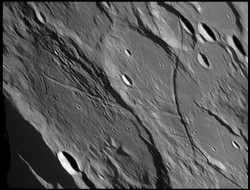 Return to landmark crater Grimaldi and we’ll continue our journey of lunar evolution as we have a look at another walled plain just to the south – Darwin. Named for English naturalist Charles Darwin, this equally old feature bears the scars of the impact the created the Orientale Basin. Look carefully at the slopes in the northeast, for this may very well be material that was thrown there and left to slide back down to the crater floor. Spanning around 130 kilometers in diameter, Darwin’s actual size is only diminished by the fact that we view it on a curve. Its northern and southern shores have almost completely eroded, yet evidence remains of its eastern margin broken by the Rima Darwin which stretches for 280 kilometers. Was there lava here as well? Yes. Evidence still exists in the form of a dome along Darwin’s battered western edge. If the lighting is right, look at the western edge of Darwin for the Montes Cordillera. This is the external mountainous ring of Mare Orientale, and they could range as long as 545 miles in length, 182 miles in width and 18,200 feet in height. Many of the summits reach as much as 5000 feet! Talk about joining the mile high club…
Return to landmark crater Grimaldi and we’ll continue our journey of lunar evolution as we have a look at another walled plain just to the south – Darwin. Named for English naturalist Charles Darwin, this equally old feature bears the scars of the impact the created the Orientale Basin. Look carefully at the slopes in the northeast, for this may very well be material that was thrown there and left to slide back down to the crater floor. Spanning around 130 kilometers in diameter, Darwin’s actual size is only diminished by the fact that we view it on a curve. Its northern and southern shores have almost completely eroded, yet evidence remains of its eastern margin broken by the Rima Darwin which stretches for 280 kilometers. Was there lava here as well? Yes. Evidence still exists in the form of a dome along Darwin’s battered western edge. If the lighting is right, look at the western edge of Darwin for the Montes Cordillera. This is the external mountainous ring of Mare Orientale, and they could range as long as 545 miles in length, 182 miles in width and 18,200 feet in height. Many of the summits reach as much as 5000 feet! Talk about joining the mile high club…
Let’s continue our studies by using an unmistakable landmark feature to help guide us to interesting points on the lunar surface. Even small binoculars will reveal the outstanding presence of crater Tycho with its bright ejecta pattern splashing across the surface. Look closely at one of the brightest of the rays, for it passes over Mare Nubium—the Sea of Clouds. This exceptionally dark, irregular plain stretches out over 563 by 464 kilometers and has many areas worth exploring – but power up on Tycho.
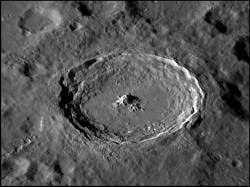 Named for Danish astronomer, Tycho Brahe, this fantastic impact crater is very impressive in even the most modest of optical aids. Spanning 85 km, this lunar feature will be very prominent and unmistakable in the southern hemisphere of the Moon. Tycho’s highly conspicuous ray system supports its origin as an impact crater. The rays span hundreds of kilometers across the lunar surface. Tycho is also one of the youngest of the major features at an astounding age of only 50,000,000 years old! On January 9, 1968 Surveyor 7 – the last lunar robot of its kind – landed quietly at lunar sunrise on Tycho’s slopes. Because previous Surveyor missions provided the Apollo program with all data necessary for manned missions, Surveyor 7’s presence was scientific only. Two weeks later, when the Sun set on the landing site, Surveyor 7 had provided over 21,000 photographs, determined physical and chemical properties associated with the Southern Highland area, and detected laser beams aimed at it from two separate Earth observatories.
Named for Danish astronomer, Tycho Brahe, this fantastic impact crater is very impressive in even the most modest of optical aids. Spanning 85 km, this lunar feature will be very prominent and unmistakable in the southern hemisphere of the Moon. Tycho’s highly conspicuous ray system supports its origin as an impact crater. The rays span hundreds of kilometers across the lunar surface. Tycho is also one of the youngest of the major features at an astounding age of only 50,000,000 years old! On January 9, 1968 Surveyor 7 – the last lunar robot of its kind – landed quietly at lunar sunrise on Tycho’s slopes. Because previous Surveyor missions provided the Apollo program with all data necessary for manned missions, Surveyor 7’s presence was scientific only. Two weeks later, when the Sun set on the landing site, Surveyor 7 had provided over 21,000 photographs, determined physical and chemical properties associated with the Southern Highland area, and detected laser beams aimed at it from two separate Earth observatories.
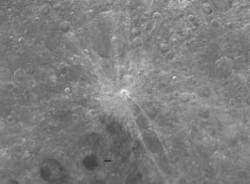 Look closely at the bright ray of material thrown across its dark floor from the impact that caused Tycho. It is easy to see that it is laid “over” the surface of the lava flow and this is an important clue to the age of lunar features. One of these rays crosses the Apollo 17 landing site 2000 kilometers from Tycho itself and may have caused a landslide from the mountains where the astronauts sampled. This suggests that Tycho is about 100 million years old. While this might seem like a great age, the Sea Of Clouds could be between 3 to 4 billion years old. Once upon a time, an impact formed its basin as well. Thanks to the Moon’s lack of atmosphere, the lava flow quietly filled the basin and left it as we see it tonight.
Look closely at the bright ray of material thrown across its dark floor from the impact that caused Tycho. It is easy to see that it is laid “over” the surface of the lava flow and this is an important clue to the age of lunar features. One of these rays crosses the Apollo 17 landing site 2000 kilometers from Tycho itself and may have caused a landslide from the mountains where the astronauts sampled. This suggests that Tycho is about 100 million years old. While this might seem like a great age, the Sea Of Clouds could be between 3 to 4 billion years old. Once upon a time, an impact formed its basin as well. Thanks to the Moon’s lack of atmosphere, the lava flow quietly filled the basin and left it as we see it tonight.
Until next week? “Lunatic fringe… We know you’re out there.”
This week’s awesome images are (in order of appearance): Nathaniel Bowditch (historical image), 11 Day Moon courtesy of Peter Lloyd, Mersenius courtesy of Damien Peach, John Pierce (historical image), Grimaldi from the Lunar Orbiter courtesy of NASA, Hansteen and Sirsalis Rille courtesy of Damien Peach, Thirteen Day Moon courtesy of Peter Lloyd, Darwin and Tycho courtesy of Damien Peach and Tycho Rays courtesy of Roger Warner. We thank you so much for sharing!
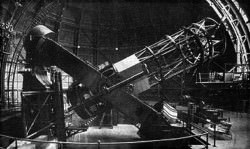 April 2, 2010 – On this date in 1889, the Harvard Observatory’s 13″ refractor arrived at Mt. Wilson. Just one month later, it went into astronomical service at Lick Observatory, located at Mt. Hamilton. It was here that the largest telescopes in the world resided from 1908 to 1948 – the 60″ for the first decade, then the 100″. This latter mirror is still the largest solid piece ever cast in plate glass, and weighed 4.5 tons. Would you believe it’s just 13″ thick?
April 2, 2010 – On this date in 1889, the Harvard Observatory’s 13″ refractor arrived at Mt. Wilson. Just one month later, it went into astronomical service at Lick Observatory, located at Mt. Hamilton. It was here that the largest telescopes in the world resided from 1908 to 1948 – the 60″ for the first decade, then the 100″. This latter mirror is still the largest solid piece ever cast in plate glass, and weighed 4.5 tons. Would you believe it’s just 13″ thick?

